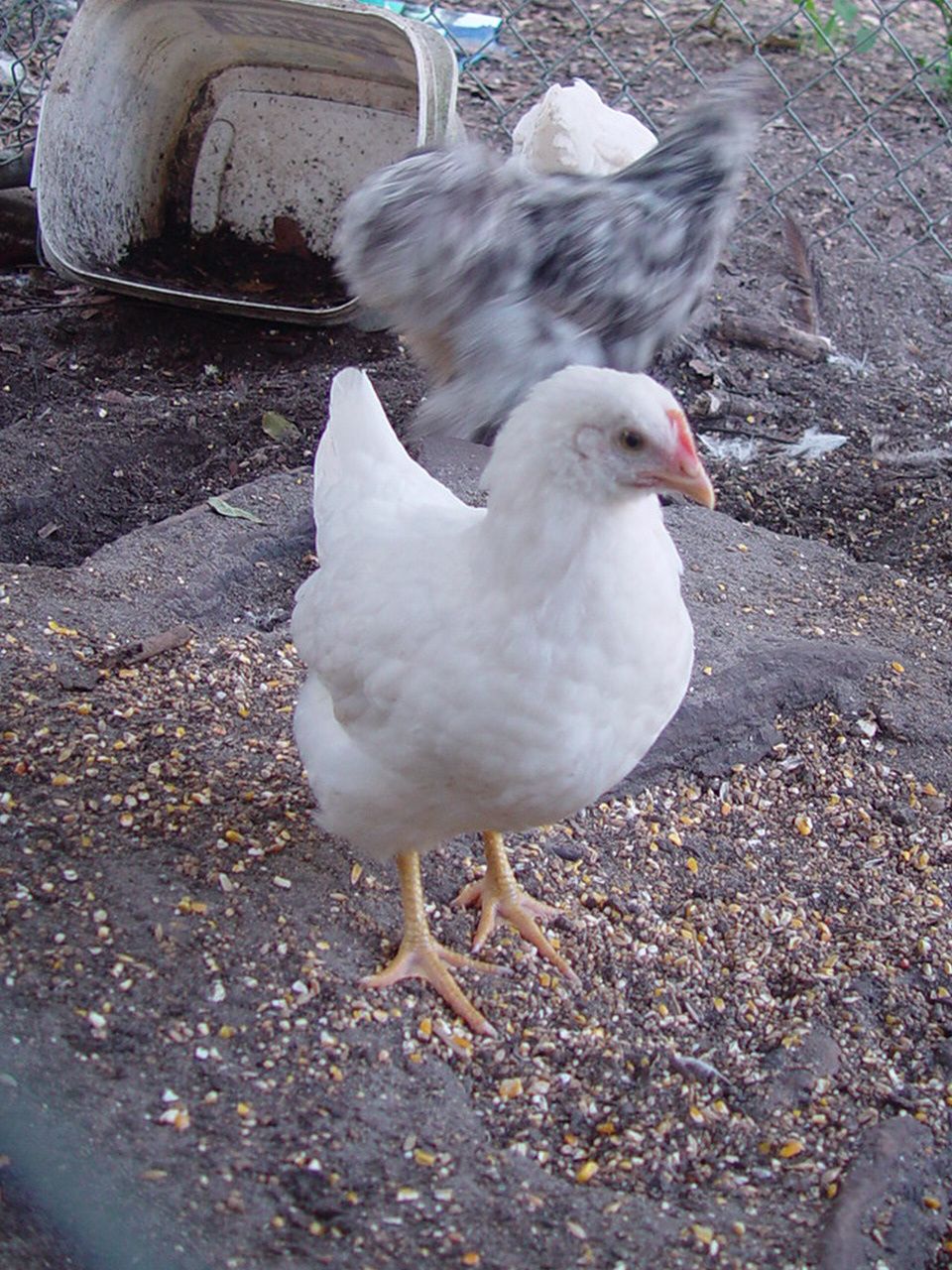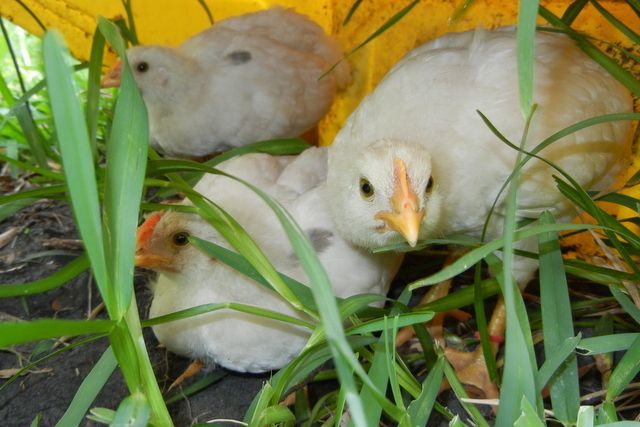- Thread starter
- #11
- Feb 25, 2011
- 41
- 0
- 22
Yes, the comb is black, but it is a single comb. For a while I was wondering if it might be part Jersey Giant, but the egg was the same size or even a bit smaller than the other eggs we were given. Those all came from the same hen and hatched nearly identical white chicks, except that two appear to be rose combed and one single combed. The two that are rose combed seem to have what I've read is a "leaky" dominant white color pattern, with one or two black tipped feathers. The other looks like it is completely white so far and has a single comb. Here they are, just in case they can shed any light onto which rooster sired the mystery chick.
This is the mother, when she was still a pullet. I can't tell for sure, but it looks like a single comb, which would mean that the rose combed chicks, at least, were sired by the Dominique, right?


This is the mother, when she was still a pullet. I can't tell for sure, but it looks like a single comb, which would mean that the rose combed chicks, at least, were sired by the Dominique, right?






